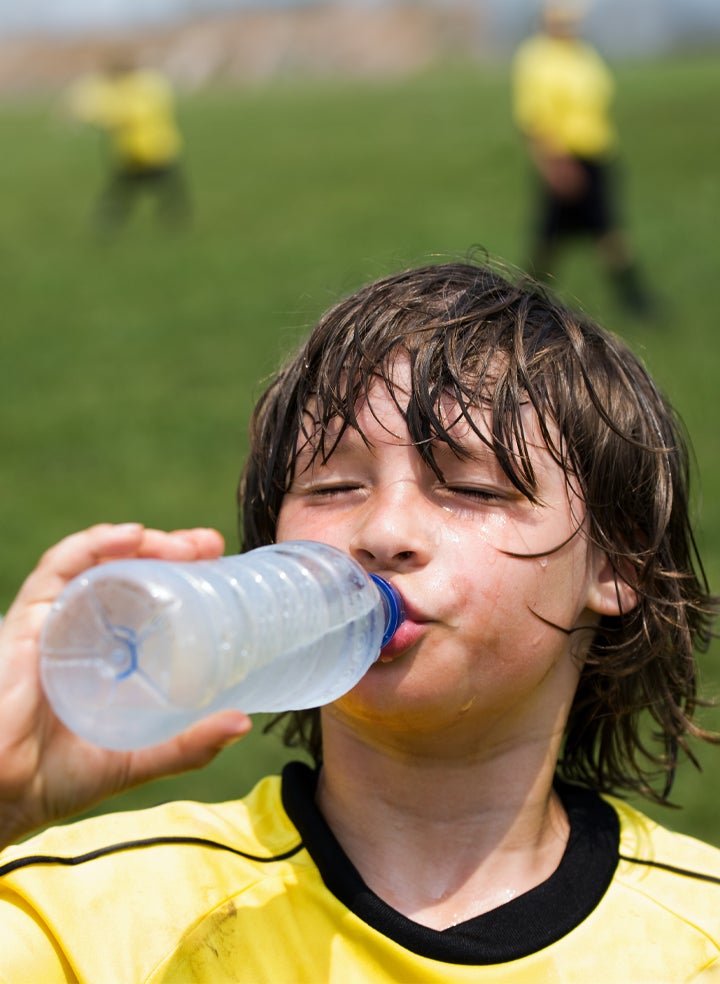Understanding Heat Exhaustion and Heat Stroke
Let’s discuss the risk factors and symptoms of heat exhaustion and heat stroke — and how to help treat them.

Summer is nearly here! The more time you spend out in the heat, the more prepared you need to be. Let’s discuss the risk factors and symptoms of heat exhaustion and heat stroke — and how to help treat them.
What is heat exhaustion?
Heat exhaustion is your body’s response to not being able to maintain enough fluid to function properly due to strenuous physical activity and heat stress.
Heat Exhaustion Symptoms
Symptoms of heat exhaustion may appear suddenly. If you have been in the sun and are experiencing any of these symptoms, relocate to a cooler area as soon as possible.
Dizziness
Faintness
Excessive thirst
Heavy sweating
Muscle cramping
Heat Exhaustion Treatment
Once you or a loved one start showing signs of heat exhaustion, get to a cooler area as soon as possible. Additional treatments to relieve heat exhaustion include:
Drinking fluids
Removing excess or tight clothing
Taking a cool shower or bath if possible
Cooling down with a fan or cold compress
If symptoms do not improve within 15 minutes, seek immediate medical care.
What is heat stroke?
Heat stroke is a severe, life-threatening condition as a result of prolonged exposure to high temperatures. When your body overheats and cannot cool itself down, and your temperature rises above 104 F (40 C), it is very likely you are suffering from heat stroke.
Heat Stroke Symptoms
If you or a loved one has been in excessive heat, has a high temperature and is displaying any of the symptoms below, call 911 for emergency medical care.
Confusion or an altered mental state
Slurred speech
Loss of consciousness
Problems with movement and coordination
A throbbing headache
Nausea or vomiting
Seizures
Skin dry and leathery without any sweating despite the heat
Heat Stroke Treatment
If someone is experiencing heat stroke, call 911 immediately. While you wait for emergency medical care, you can offer treatment by trying to cool the individual as much as possible.
Move them to a cool shaded area
Circulate the air surrounding them with a fan
Place ice packs or wet cloths on their head, neck, armpits, groin and back
Do not use ice for older patients, young children, those with chronic illness or anyone suffering from heat stroke without exercise.
What’s the difference between heat exhaustion and heat stroke?
Heat exhaustion and heat stroke are both conditions from extreme heat. Heat stroke is much more severe and can be life-threatening.
If it is not treated properly, heat exhaustion can turn into heat stroke.
How can I prevent heat exhaustion or heat stroke?
The best way to prevent heat exhaustion and heat stroke is to be aware of your surroundings and your limits. Drink water often, wear light and loose clothing, avoid alcohol and caffeine, wear sunscreen and reschedule or relocate activities if the heat is extreme.
Elderly individuals and young children may need help regulating their body temperatures. Check in on them and remind them to drink fluids frequently.
When should I visit urgent care to treat my heat exhaustion or heat stroke?
While heat exhaustion and heat stroke are not typically treated at urgent care clinics, the symptoms and warning signs associated with heat conditions, like dehydration, can be alleviated to prevent further harm.
Visit WellNow for Heat Exhaustion and Heat Stroke Prevention
If you or a loved one has spent extensive time outside and you suspect dehydration and the early warning signs of potential heat exhaustion, WellNow’s dedicated medical team will provide comprehensive care and treatment to help prevent further issues.
Reserve your spot at a WellNow clinic near you.
Start a virtual visit.
WellNow Urgent Care is a series of urgent care clinics and virtual care serving the Midwest and Northeastern United States in Illinois, Indiana, Michigan, New York, Pennsylvania and Wisconsin.
Information contained in this blog is for informational or educational purposes only and does not substitute professional medical advice or consultations with healthcare professionals. The content is not meant to be complete or exhaustive or to apply to any specific individual's medical condition. Always refer to the personalized information given to you by your doctor or contact us directly.
